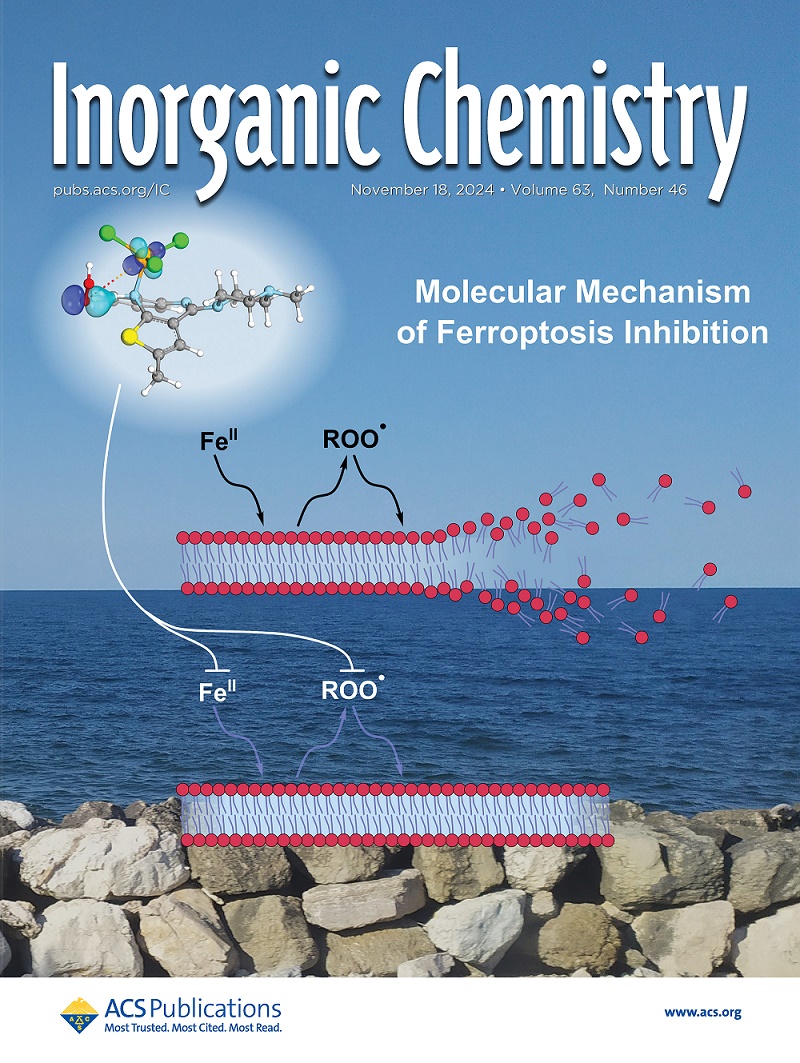Blue-Light-Excitable Yellow Emissive One-Dimensional Hybrid Copper(I) Iodide for White-Light-Emitting Diode and Methanol Sensing Application
IF 4.3
2区 化学
Q1 CHEMISTRY, INORGANIC & NUCLEAR
引用次数: 0
Abstract
Copper(I) halides are promising candidates for advanced optoelectronics, such as white-light-emitting diodes (WLEDs), scintillators, and photodetectors. Designing and synthesizing low-dimensional hybrid copper halides with blue-light excitation remains an enormous challenge. Herein, we have prepared two one-dimensional (1D) hybrid Cu(I)-based metal iodides, namely, (C6H7N)CuI and (C6H8N)CuI2 single crystals, by deliberately adjusting the ratio of the reactants 4-methylpyridine (4-MePy) and CuI. (C6H7N)CuI crystals are nonluminous, while (C6H8N)CuI2 crystals exhibit an unusual yellow emission with a broad excitation band in the range of 260–500 nm Furthermore, a prototypical WLED is fabricated by combining a commercial 430 nm blue chip and (C6H8N)CuI2 phosphor, which exhibits a correlated color temperature (CCT) of 5645 K and a CIE color coordinate of (0.329, 0.334), thus demonstrating potential application for white lighting. Remarkably, (C6H8N)CuI2 crystals emit red fluorescence upon adsorption of methanol but fail for all other alcohols. Notably, the initial yellow luminescence can be recovered upon volatilization of methanol from the crystals, thus achieving a reversible photoluminescence switching. This work not only presents an important reference of blue-light-excitable hybrid Cu(I)-based metal iodide phosphor for WLEDs but also provides an intriguing fluorescence sensor for the reversible detection of methanol.

求助全文
约1分钟内获得全文
求助全文
来源期刊

Inorganic Chemistry
化学-无机化学与核化学
CiteScore
7.60
自引率
13.00%
发文量
1960
审稿时长
1.9 months
期刊介绍:
Inorganic Chemistry publishes fundamental studies in all phases of inorganic chemistry. Coverage includes experimental and theoretical reports on quantitative studies of structure and thermodynamics, kinetics, mechanisms of inorganic reactions, bioinorganic chemistry, and relevant aspects of organometallic chemistry, solid-state phenomena, and chemical bonding theory. Emphasis is placed on the synthesis, structure, thermodynamics, reactivity, spectroscopy, and bonding properties of significant new and known compounds.
 求助内容:
求助内容: 应助结果提醒方式:
应助结果提醒方式:


